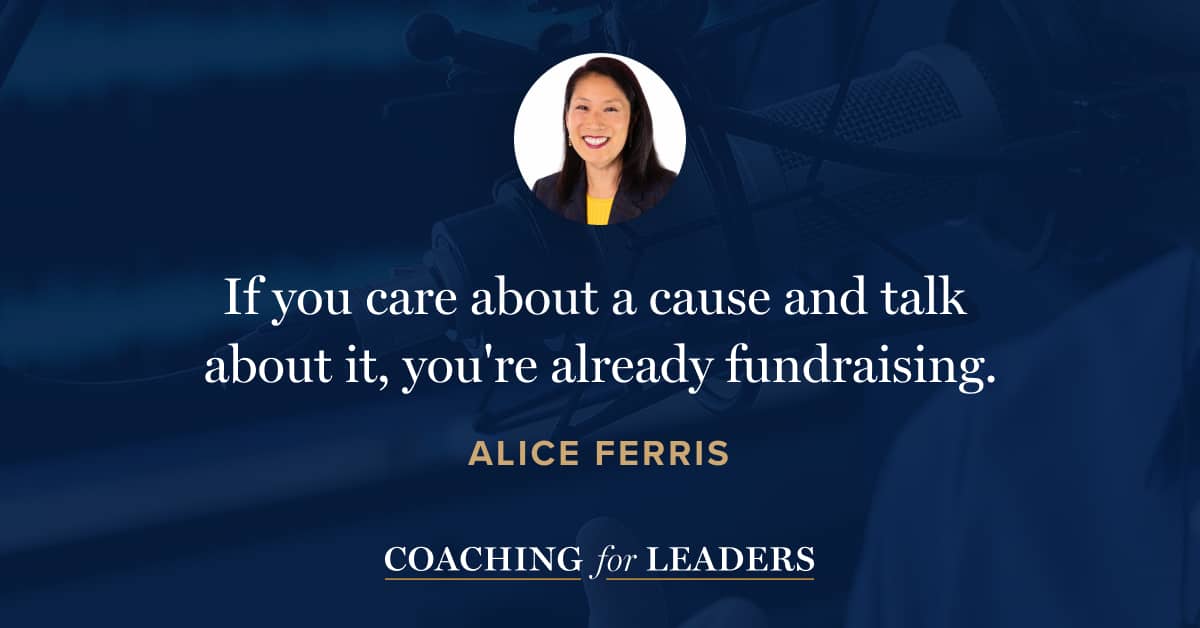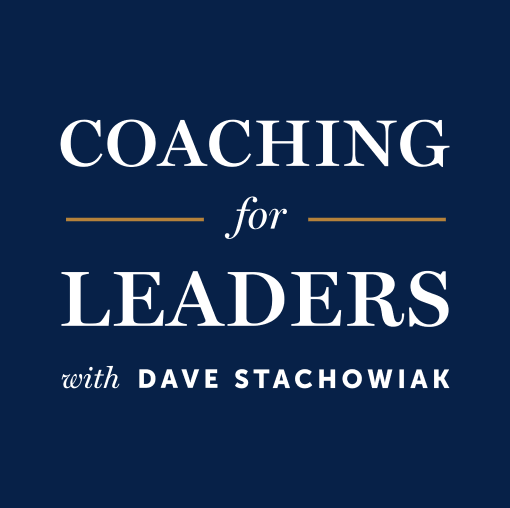Alice Ferris: GoalBusters
Alice Ferris is the Founding Partner of GoalBusters, a firm working to help small and mighty fundraising teams achieve big impact by planning practical strategies, teaching essential fundraising skills, and doing the hands-on work to turn vision into reality. She has more than 30 years of professional fundraising experience, specializing in strategic and development planning, campaign readiness and development program assessments, board and organizational training, executive leadership coaching, individual giving, and grant proposal evaluation. She’s also a graduate of the Coaching for Leaders Academy.
Fundraising is not a word that sparks joy for most leaders. In fact, many people who do fundraising never planned to have that be part of their career. And yet, almost every leader has an aspect of fundraising in their professional or personal lives. In this conversation, Alice and I explore how to get better at it.
Key Points
- Almost every leader is involved with fundraising in some capacity, either personally or professionally.
- It’s a myth that fundraising is just asking for money. Most fundraising activities happen outside of the ask.
- Consider fundraising goals for must-do activities, maintaining the current state, and aspirational growth.
- Most people share health issues with their immediate family and close friends. When your organization is facing headwinds, tell your donors how they can help.
- Dedicated attention to fundraising is key for both prioritization and relationship continuity.
- Connectors, experts, and closers are all essential roles in the fundraising process. Play to the strengths of both staff and volunteers to fill these roles well.
Resources Mentioned
- Connect with Alice on LinkedIn
- GoalBusters
Related Episodes
- How to Lead Top-Line Growth, with Tim Sanders (episode 299)
- How an Executive Aligns with a Board, with Joan Garry (episode 662)
- The Reason People Make Buying Decisions, with Marcus Collins (episode 664)
Expert Partner
Beginning a career transition? Feeling stagnant in your current role? Scott Barlow and his team may be able to help as official partners of Coaching for Leaders. To discover more about how his team can support you, get in touch on our expert partners page.
Discover More
Activate your free membership for full access to the entire library of interviews since 2011, searchable by topic. To accelerate your learning, uncover more inside Coaching for Leaders Plus.





